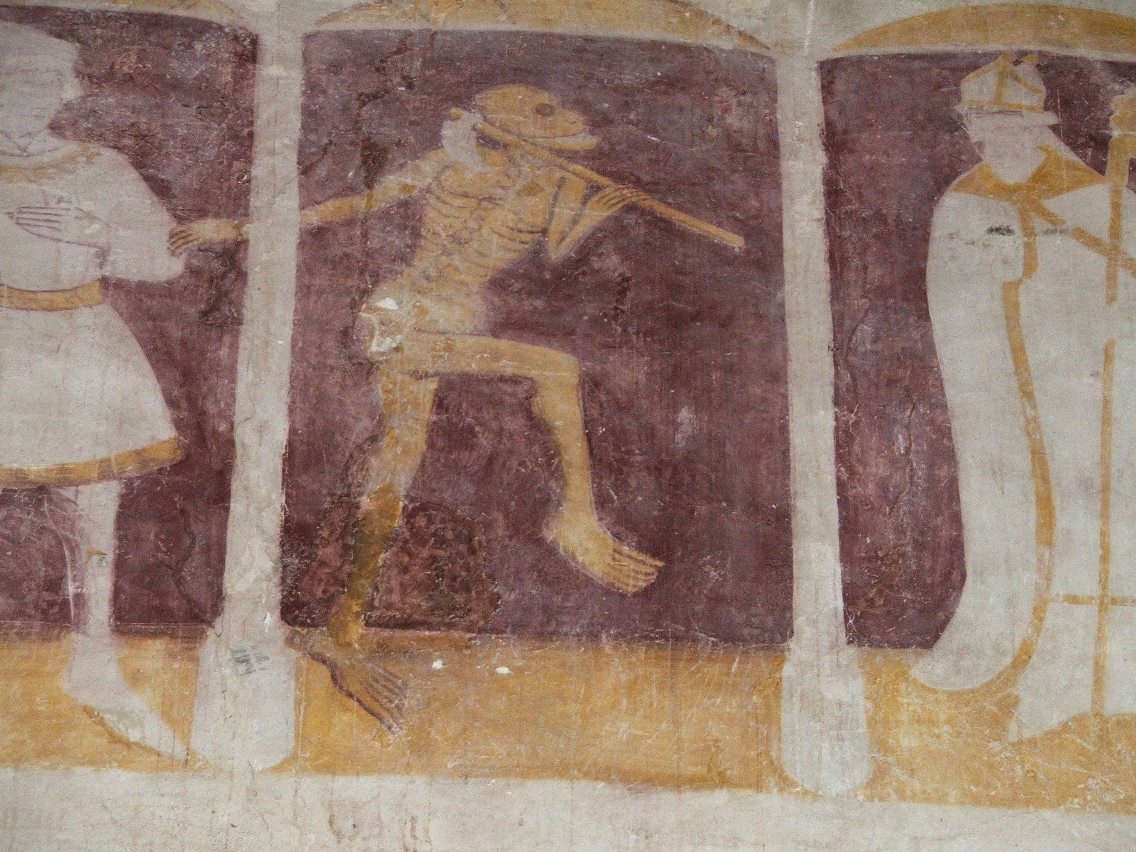The personification of death and it's representations are not unique to Brittany but when we speak of the Ankou, we are evidently in Breton speaking country. We find it throughout religious edifices. On the one hand in the granite sculptures in Noyal-Pontivy (XVth), Bulat-Pestivien (1552), Landivisiau (1585), Cléden-Poher (XVIth), Brasparts (XVIth), Lannédern (XVIth), La Martyre (1619), Ploudiry (1635) and also in La Roche-Maurice (1639), on the other hand, we can see two Ankous in wood dated from the XVIIth century, the first, in the church of Ploumilliau and the second, in the Jacobins museum in Morlaix.
In addition, we notice the Ankou, at the same time in the macabre dances painted inside the Chapels of Kermaria-an-Isquit in Plouha (1450-1460) and in Kernascleden (v. 1464), the latter alas very degraded. The chain of dancers represent the society according to the social echelon of each : emperor, cardinal, king, duke, bishop, knight, merchant, farmer... Each human is brought into the sarabandeby a skeleton.
Finally, in Upper-Brittany where death personified is rarely represented, we note one sculpture in the sandpits of the porch of the Saint-Georges-de-Chesné Church (XVIth) and one painting on the panelling of the Saint-Hervé Church porch (XVIIth). The first is armed with a long arrow, the second draped in a shroud with the inscription in latin : nemini parco (I spare no one).


